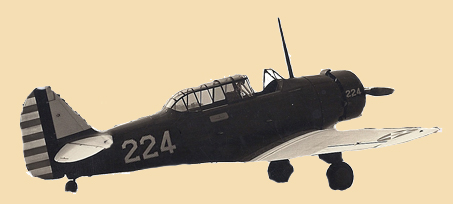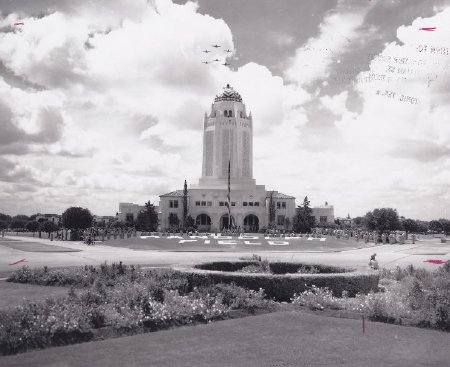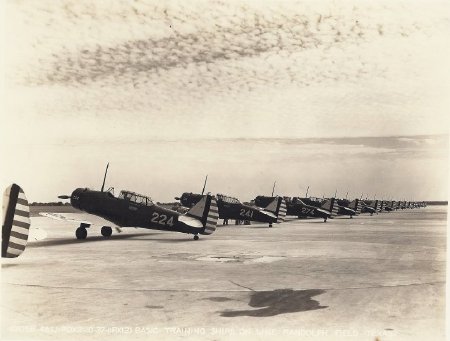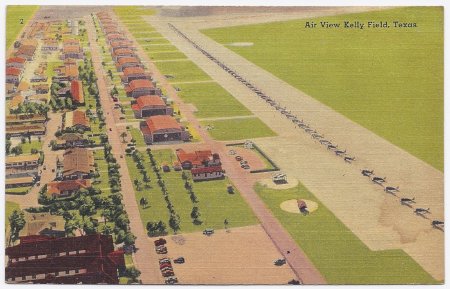Pan-American Foreign Aid
History:
In terms of foreign aid to Latin nations, the U. S. government offered more than just neighborly hospitality. Many Central American countries had declared war against Germany and Japan in 1941, while Mexico delayed its entry into the war until May of 1942, after German U-boats sank two Mexican oil tankers in the Gulf of Mexico.25
The U.S. military invited allied Pan-American air force personnel to train at various bases around the country, with San Antonio's air fields serving as the entry point. Medical personnel, technicians, and pilots from these countries trained at Randolph and Brooks Fields throughout the 1940s. By 1943, "50-75 Central and South American pilots [made] their homes in San Antonio at all times."26 Mexico's 201st squadron, which became the first Mexican aerial unit to go into combat and fight with the Allies in the Pacific in 1945, initially trained at Randolph Field.27
The San Antonio Air Service Command at Kelly Field participated in a Lend-Lease program with various Latin American countries, including Brazil, Chile, Panama, Guatemala, and Mexico. In exchange for needed supplies, pilots trained at Kelly and received leased planes to fly back to their respective countries.28
The U.S. military invited allied Pan-American air force personnel to train at various bases around the country, with San Antonio's air fields serving as the entry point. Medical personnel, technicians, and pilots from these countries trained at Randolph and Brooks Fields throughout the 1940s. By 1943, "50-75 Central and South American pilots [made] their homes in San Antonio at all times."26 Mexico's 201st squadron, which became the first Mexican aerial unit to go into combat and fight with the Allies in the Pacific in 1945, initially trained at Randolph Field.27
The San Antonio Air Service Command at Kelly Field participated in a Lend-Lease program with various Latin American countries, including Brazil, Chile, Panama, Guatemala, and Mexico. In exchange for needed supplies, pilots trained at Kelly and received leased planes to fly back to their respective countries.28
About this Image:
1) View of the "Taj Mahal" administration building at Randolph Field. Planes fly over the distinctive central water tower. Servicemen are gathered outside facing the oversized American flag in front of the building. Credit:Zintgraff Studio Photograph Collection, Z-2008-I, University of Texas at San Antonio Libraries Special Collections. Institute of Texan Cultures.
2) A line of BT-9s rest at Randolph Field. Randolph initially provided all of the basic flight training after the air field's completion, ca 1931. By the 1940s, Randolph served as the Gulf Coast Air Corps Training Center, and then as the Central Flying Training Command. Credit: Photgraphic Department, Randolphh Field, Texas.
3) A postcard showing an aerial view of Kelly Air Field, featuring the hangers and apron. During the war, most of the advanced training for pilots took place at Kelly.
2) A line of BT-9s rest at Randolph Field. Randolph initially provided all of the basic flight training after the air field's completion, ca 1931. By the 1940s, Randolph served as the Gulf Coast Air Corps Training Center, and then as the Central Flying Training Command. Credit: Photgraphic Department, Randolphh Field, Texas.
3) A postcard showing an aerial view of Kelly Air Field, featuring the hangers and apron. During the war, most of the advanced training for pilots took place at Kelly.
To Learn More:
Credit:
Courtesy of the San Antonio Conservation Society Foundation.




